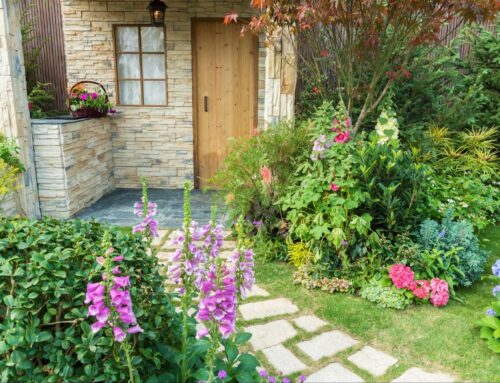There comes a time when you either have to newly paint, repaint or just paint for the sake of painting! I am talking house painting….not painting in the artistic sense. Although I know people who claim to be “artistic” when it comes to painting their homes, I am not one of them! I on the other hand claim no artistic ability when it comes to any kind of painting. In fact, after trying to paint a room, a comment was made that it looked like I painted with a mop! So, I thought that I would share some basic painting guidelines for those of you who may fit into the “mop” category!
I did some research of course and came up with these simple steps for painting walls in your home:
- Remove or cover furniture in the room! Don’t think that you will be so neat that there won’t be any splatters. You will see splatters on everything including yourself!
- Dust and vacuum! Even though the room looks clean, those tiny dust particles will adhere to the walls giving your walls a “textured” look when you were not intending them to be so!
- Line the rooms edges with paper…newspaper or store bought. Those edges will catch drips and brush stroke mistakes if you don’t!
- Spackle and Sand. If there is loose or peeling paint, be sure to scrape and sand that area. Use Spackle or any patching material to fill in any cracks, holes, or dents. After applying the Spackle, allow it to dry according the instructions on the package (normally about 2-4 hours). Lastly, use sandpaper to create a smooth surface. If necessary, you may apply a second coat and repeat the process. And don’t forget to dust and vacuum after this step!
- Wash those walls! Thoroughly wash the room’s walls with a mild soap and water solution. Then, rinse with clean water and allow them to dry completely.
- It’s primer time! I always thought that you don’t really need a primer. I convinced myself of this so I wouldn’t have to tackle yet another application of something on the walls. Paint was enough of a challenge! But, a primer must be used in order to protect bare, unfinished drywall. Applying a primer is also beneficial for walls that were previously painted with a darker color, stained, or are generally in need of repair.
- An arduous but necessary task…….painter’s tape! That blue colored tape that has you taping for hours to get it “just right”. This step is essential in keeping paint off the windows and trim. Using the tips of your fingers, press the tape firmly onto the wall’s surface while ensuring there aren’t any air bubbles or folds that paint could get into. The air bubbles was something I never noticed until I removed the tape and saw the implications! Not good.
- Paint from the top down. As a “mopper” I never had a plan of action……I just started painting! The recommendation is to paint the ceiling first. After that, go ahead and start on painting the walls, but be sure to start in a corner. Next, you’ll want to paint the trim, followed by the cabinets and doors if you plan on painting those.
- Wait until the paint is dry and remove that blue tape. Slowly pull the tape off in a continuous and steady motion, all the while keeping a 90-degree angle to the painted surface. Sticking to that angle will give your walls the cleanest possible paint line. I myself would just peel and tug…..I am sure I had many angles while performing this task!
- This is my favorite step……disregard steps 1-9 and call a painting contractor to do the job!!





